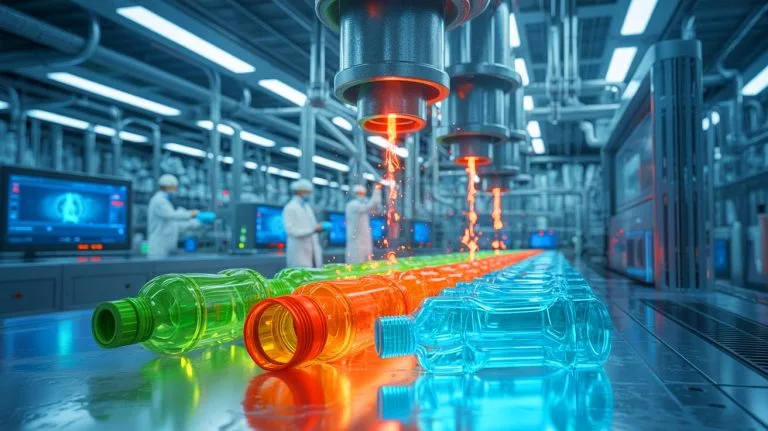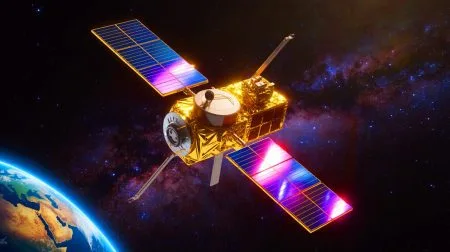| IN A NUTSHELL |
|
Plastic pollution has become a pervasive issue in our environment, manifesting in both deep oceanic depths and geological layers as “plastistone,” a novel sedimentary rock formed from the fusion of plastic waste and natural rocks. In response to this growing problem, scientists are exploring innovative methods to recycle plastic waste into fuel. This controversial approach, known as pyrolysis, involves heating plastic to high temperatures to break down its molecular structure, resulting in usable hydrocarbons. While promising, the environmental and industrial viability of this method remains under scrutiny.
The Science Behind Pyrolysis
Pyrolysis is a process that involves heating plastic to approximately 1,650°F in the absence of oxygen. This method breaks down the long chains of plastic molecules, converting them into hydrocarbons that can be used as a form of energy. Traditionally, this process yields about 60% conversion of plastic into pyrolysis oil or “bio-oil,” which can power boilers, turbines, and diesel engines. This technology has piqued the interest of researchers and industries worldwide as a potential solution to the mounting plastic waste problem.
Recent advancements have emerged from research conducted at Yale University, where scientists successfully increased the yield of pyrolysis to 66% without the use of catalysts. This improvement could significantly reduce the costs and maintenance challenges associated with catalyst use. By testing their methods with industrial carbon felt, researchers demonstrated the adaptability of the process, achieving a conversion rate of about 56% of plastic into bio-oil. These developments suggest that the method could be adapted for broader application, although significant challenges remain.
“Dead Batteries Still Hold Power”: The US Eyes Billions in Lithium as Nations Clash Over Resources
Challenges and Environmental Concerns
Despite the technological advancements, pyrolysis is not without its drawbacks. The process itself is energy-intensive, requiring substantial energy input that results in the emission of CO2 and other pollutants. This has led some experts to describe the approach as an “industrial illusion,” suggesting that it does not fundamentally address the underlying dependence on fossil fuels. The current global trend of increasing production of single-use plastics further complicates the potential impact of this technology.
While researchers acknowledge the need for improved energy efficiency and better management of secondary emissions, the scalability of the technology offers some hope. Nonetheless, the primary solution may lie in reducing the production of new plastics and preventing plastic waste from entering the environment in the first place. Until such measures are implemented, pyrolysis and similar technologies can only provide partial relief to the plastic pollution crisis.
Implications for the Anthropocene
The proliferation of plastic waste has profound implications for the Earth’s geology and biology. The presence of microplastics in living organisms and the formation of plastistones on every continent highlight the enduring impact of human activity on the planet’s ecosystems. These markers are becoming defining characteristics of the Anthropocene, a term used to describe the current geological age viewed as the period during which human activity has been the dominant influence on climate and the environment.
Advanced recycling techniques like pyrolysis represent a response to these environmental challenges, but they must be part of a broader strategy to mitigate plastic pollution. Reducing the production of plastics and developing sustainable alternatives are critical steps in addressing this pervasive issue. As the international community works towards agreements to limit plastic proliferation, innovative recycling methods will play a role, albeit a limited one, in managing existing plastic waste.
The Future of Plastic Recycling
As scientists continue to refine pyrolysis and other advanced recycling technologies, the question of their long-term viability remains open. The environmental and industrial feasibility of such methods must be thoroughly evaluated to determine their role in future waste management strategies. While the potential to recycle plastics into fuel offers a glimpse of hope, it is not a panacea for the plastic pollution crisis.
The future of plastic recycling will depend on a combination of technological innovation, policy measures, and behavioral change. As researchers work to optimize processes like pyrolysis, the global community must also focus on reducing plastic production and encouraging sustainable consumption patterns. With the stakes as high as they are, what collaborative efforts will emerge to tackle the complex challenge of plastic pollution on a global scale?
Did you like it? 4.4/5 (23)







Wow, turning trash into treasure! 🚮🔥 How cool is that?
Wow, this sounds like a game-changer! How soon can we expect this to be implemented on a large scale?
Isn’t burning plastic for fuel still harmful to the environment? 🤔